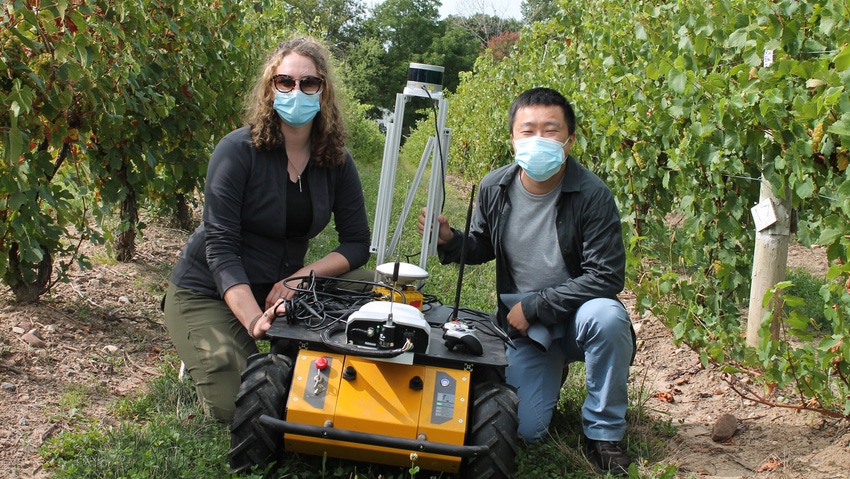
While both “powdery” and “downy” are called mildews, neither are welcome in grapevines and Katie Gold spends her time trying to figure out how to keep those unwelcome visitors away.
Gold is a professor of grape pathology at Cornell University’s College of Agriculture in Geneva, New York, and what she does Back East has an impact on how grapes are kept healthy on the West Coast.
“We maintain four acres of pathology vineyards where we test the latest and greatest of fungicides like testing the new DSRNA-based [Double-Stranded DNA] biopesticides for mildew control," she says. "I’m excited about this because it’s a new sort of technology that has a lot of promise for high efficacy with low environmental impact. Our efficacy studies are designed to provide growers with relevant disease control information.”
Gold and fellow researchers are also taking a closer look at robotics and remote sensing as tools to fight mildew. “We’ve started this really awesome project using high resolution satellite imagery — 50 centimeter pixels from space — in conjunction with robots in the vineyards to develop early disease intervention. We have really cool technology on the ground and autonomous rovers with computer vision capable of snapping out downy mildew with accuracy. It’s as good as a veteran field expert looking at the same image and we’re using hyperspectral sensors and disease severity maps generated by the robots to train our satellite algorithms to find the disease — better and faster.”
And then East Coast research meets West Coast growers. “Growers in the West have really been at the forefront of adopting remote sensing for crop management, things like selective harvesting and harvest yield estimation and vine health and vigor related to nutrients,” she says. “We’ve taken that dearth of remote sensing disease management and mixed it with applied management to ensure that what is being done on the ground to make sure those diseases don’t show up and eat your lunch.
“We want remote and proximal sensing to be used by growers in the future to help in disease management, so that one day we can rely on these satellites and ground sensors as tools for early management intervention and ultimately to make position spray applications only exactly where and when they are needed.”
‘I’m pleasantly surprised’
So while the future holds promise based on technology, we asked if there were any current new applications that West Coast growers could implement this year to do things differently than in the past.
“In terms of applied management, I’m pleasantly surprised at the efficacy of a number of really great new products coming online in the form of next generation biopesticides and that’s something that could be implemented immediately. Unfortunately, our Grape Sensing, Pathology, and Extension Laboratory got launched just weeks before the global pandemic hit, so most of our work is not yet ready for field deployment by growers, but we’re hoping that happens soon so growers can test out these new developments.”
So might it be possible to eliminate the scourges of downy and powdery mildew? “You’re never going to eliminate them, but we’re moving towards where they’re not the overarching menaces they are in our lives right now,” she prophesied, noting additional work on UV light technology robotically applied at night for short duration to wrestle powdery mildew into control. “This is actually a technology available to growers if they want to build their own light array and drag it into the field.”
She makes no progress predictions for calendar 2021 — “If I had that crystal ball, I’d be making a lot more money than I do now” — but: "One thing I see is working in collaboration with NASA and the Jet Propulsion Lab to work on mass asymptomatic and symptomatic viral infections in California vineyards,” she said. “We already have a massive collection of data we’re using to help future satellites and sensors more accurately detect grape industry diseases.”
About the Author(s)
You May Also Like




